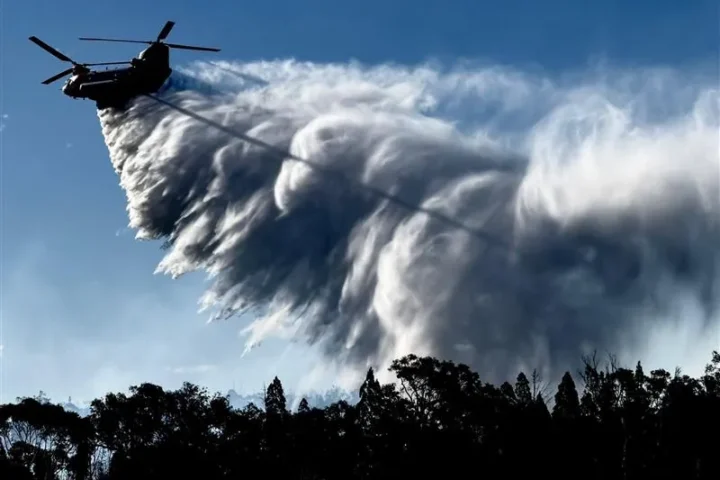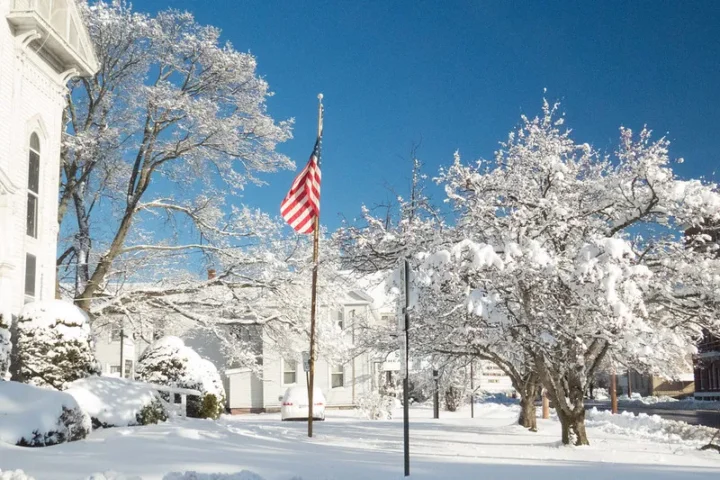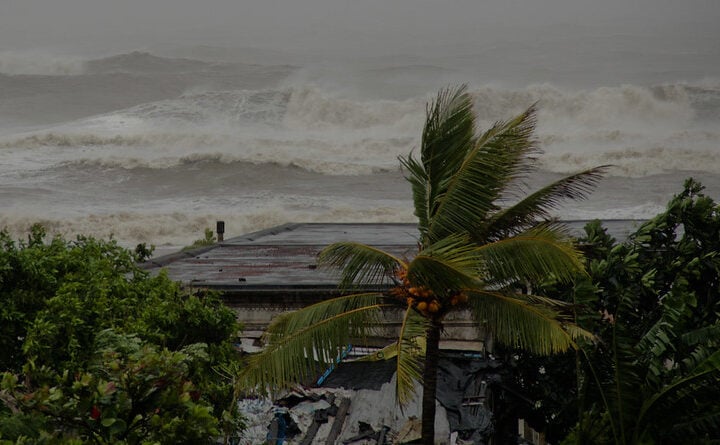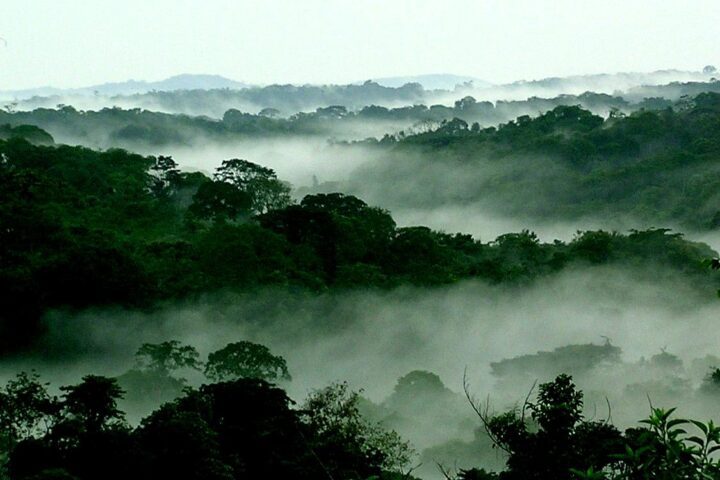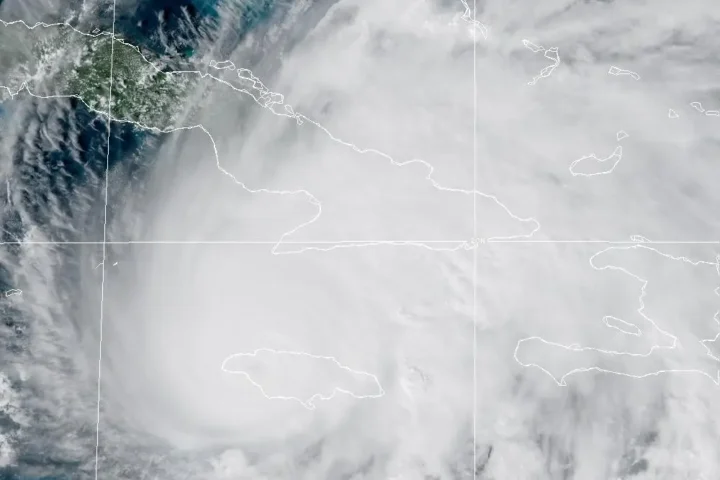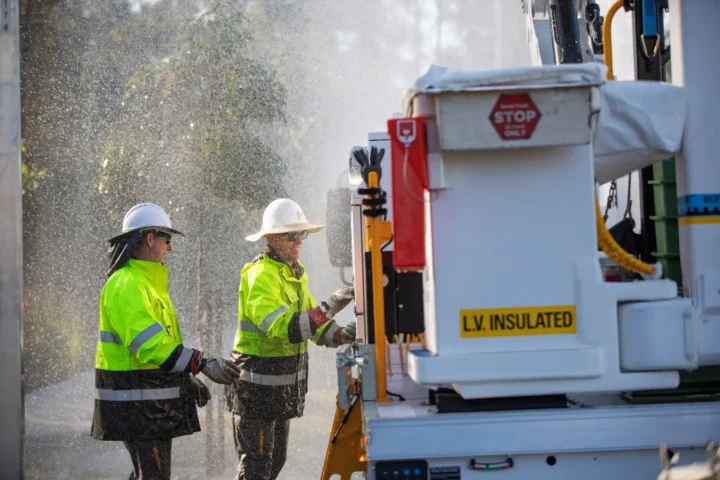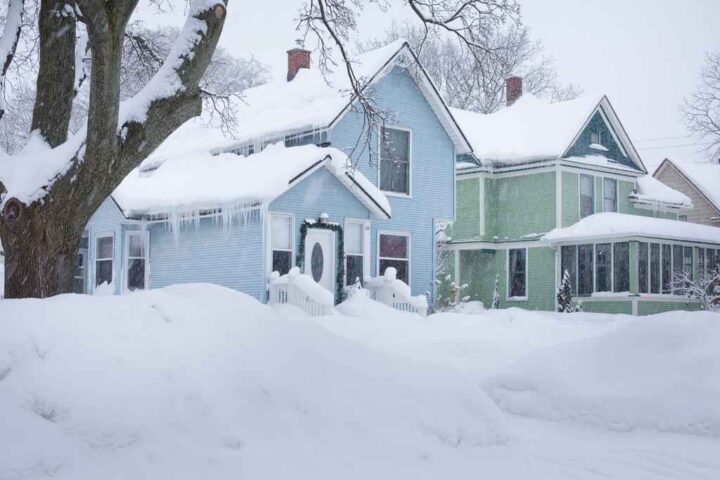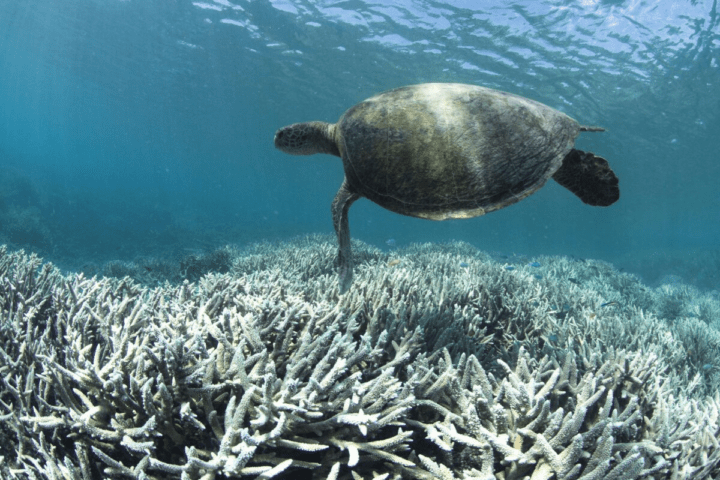Eight-Model Analysis Projects Multi-Century Glacier Evolution Under Temperature Scenarios
Glaciers globally will lose 39% of their mass relative to 2020, corresponding to a global mean sea-level rise of 113 mm (range 43-204 mm) even if temperatures stabilized at present-day conditions, according to research published in Science journal. The study examined glacier evolution over multicentennial timescales using eight distinct glacier models.
The study used eight different glacier models and examined 80 future climate scenarios, producing results that showed glaciers will lose 76% of their mass if current climate policies continue (leading to 2.7°C warming), versus 39% loss if temperatures stabilize at current levels.
Mass Balance Projections Show Stark Temperature Dependency
The research team led by Harry Zekollari from Vrije Universiteit Brussel in Belgium and ETH Zürich in Switzerland simulated global glacier behavior across centuries. Using eight glacier models, researchers simulated global glacier evolution over multicentennial timescales, allowing glaciers to equilibrate with climate under various constant global temperature scenarios.
The study focused on aggregate glacier mass changes rather than individual glacier dynamics. Researchers tracked total mass balance across glacier systems to project long-term ice loss patterns under different warming scenarios.
Temperature Scenarios Drive Divergent Glacier Futures
Under Paris Agreement targets limiting warming to 1.5°C, more than twice as much global glacier mass remains at equilibration (53% versus 24%) compared with the warming level resulting from current policies (+2.7°C by 2100 above preindustrial).
The equilibrium line altitude (ELA) concept proves central to glacier mass balance analysis. The equilibrium line altitude (ELA) historically developed from climatic snow lines but today it is defined as the spatial average of the zero mass balance contour line over a mass balance year.
Current climate policies track toward 2.7°C warming by 2100. Based on climate pledges from the Conference of the Parties (COP26), global mean temperature is projected to increase by +2.7°C, which would lead to a sea level contribution of approximately 230 millimeters from glacier loss alone and cause widespread deglaciation in most mid-latitude regions by 2100. This rise threatens major coastal cities worldwide.
Regional Vulnerability Patterns Emerge Across Glacier Systems
Glaciers in Western Canada and the United States, northeast Canada, Scandinavia and the Russian Arctic are among those particularly at risk. The study identified distinct regional responses to climate forcing, with some regions experiencing accelerated glacier melt patterns.
Glaciers in the US and Canada are the most affected, as 75 percent are already predicted to melt. The Hindu Kush and Karakoram ranges, while more resilient than other regions, still face significant shrinkage as global temperatures rise. In comparison, glaciers in the Alps have already forced border redrawing between nations.
Mass balance gradients vary significantly between glacier types. Temperate glaciers at relatively low latitudes, such as Fox Glacier in New Zealand, may be sustained by very high precipitation. They will therefore have a greater mass balance gradient (more accumulation, more ablation). These wet, maritime glaciers may have a shorter response time and higher climate sensitivity than cold, polar glaciers that receive little accumulation but also have correspondingly low ablation.
Century-Scale Modeling Extends Beyond Traditional Projections
This “landmark” study is “one of the most important pieces of glacier projection work that’s been done this decade.” Unlike previous studies that ended predictions at 2100, this research extends projections over centuries, allowing glaciers to reach equilibrium with climate conditions.
These long-term losses largely exceed those projected over the 21st century, implying that the most substantial impacts of today’s climate policies on glacier mass will unfold after 2100. Notably, regions previously found to experience limited mass loss in the 21st century, such as Arctic Canada, Russian Arctic, and Subantarctic & Antarctic Islands, are projected to lose substantial mass on longer timescales.
Scientific Methodology Employs Multi-Model Ensemble Approach
The research incorporated multiple glacier evolution models to reduce uncertainty. GlacierMIP provides a framework for a coordinated intercomparison of global-scale glacier evolution models with the ultimate goal of advancing our understanding of past and future glacier changes and their contribution to sea-level rise on a global scale.
The recently completed Randolph Glacier Inventory (RGI), which for the first time provided basic inventory data for all ~200,000 glaciers in the world, opened new opportunities for more sophisticated approaches to model glaciers on a global scale.
Geodetic mass balance measurements complement traditional glaciological observations. Geodetic mass balance is calculated as the product of mean density of glacier mass and glacier volume change. Differences between direct and geodetic mass balance arise from differences between measured and assumed densities, from basal and internal processes, and from measurement uncertainties in both volume change and direct mass balance.
Similar Posts
World Glacier Monitoring Service Tracks Reference Glaciers
The reference glaciers have more than 30 years of ongoing glaciological mass-balance measurements. As an essential climate variable, these glaciers build the backbone of the observational network of the WGMS within the Global Climate Observation System in support of the United Nations Framework Convention for Climate Change.
The World Glacier Monitoring Service (WGMS) was started in 1986, combining the two former services PSFG (Permanent Service on Fluctuations of Glaciers) and TTS/WGI (Temporal Technical Secretary/World Glacier Inventory).
The average mass balance of the glaciers with available long-term observation series around the world continues to be very negative. The latest data continues the global trend in strong ice loss over the past few decades and brings the cumulative average thickness loss of the reference glaciers since 1980 to more than 25 m w.e.
Research Team Emphasizes Scientific Objectivity
“We’re not activists, this is science talking,” said Harry Zekollari. “Sometimes, the remarks we get is like ‘you’re alarmist and making people scared.’ I say, ‘I’m trying to give out what our computer numbers give us.'”
“Our study makes it painfully clear that every fraction of a degree matters,” Zekollari told The Guardian. “The choices we make today will resonate for centuries, determining how much of our glaciers can be preserved.”
Sea Level Rise Contributions Quantified Across Scenarios
Researchers estimate glaciers will eventually lose 39% of their mass relative to 2020, a trend that is already irreversible no matter what comes next and will likely contribute a 113-millimeter increase to global sea level rise. The loss rises to 76% if the world continues to pursue its current climate policies. Such losses affect water sources for billions, as witnessed when Buddhist monks performed funeral ceremonies for significantly retreated glaciers.
The latter scenario could prove disastrous for countries that depend on glacial meltwater for irrigation, power and drinking water; a world in which 39% of the glacier mass is lost compared to 76% is the “difference between being able to adapt to the loss of the glacier and not,” James Kirkham, a glaciologist at the International Cryosphere Climate Initiative told CNN. Coastal areas may also face saltwater intrusion as sea levels rise.
Physical Modeling Approaches Advance Glacier Projections
The research incorporated multiple glacier evolution models to reduce uncertainty through ensemble modeling approaches. GlacierMIP provides a framework for a coordinated intercomparison of global-scale glacier evolution models with the ultimate goal of advancing our understanding of past and future glacier changes and their contribution to sea-level rise on a global scale.
Historical Context Frames Current Glacier Retreat
Worldwide collection of information about ongoing glacier changes was initiated in 1894 with the foundation of the International Glacier Commission at the 6th International Geological Congress in Zurich Switzerland. It was hoped that long-term glacier observations would give insight into processes of climatic change such as the formation of ice ages.
One century of systematic observations clearly reveal a general shrinkage of mountain glaciers on a global scale. At a secular time scale the observed melt rates indicate energy fluxes which roughly correspond to the estimated anthropogenic greenhouse forcing.
Surface Mass Balance Components Drive Glacier Response
Surface mass balance is the difference between the precipitation (rain and snow) that has accumulated on the upper surfaces of glaciers and ice sheets and what has been lost due to melt and eventual runoff and evaporation. It does not include ice lost in the lower margins due to calving and thinning from contact with warm ocean waters.
If glaciers have a mass balance that is in equilibrium with climate, then the inputs are equal to the outputs. The glacier remains the same size, and does not grow or shrink. Ice continues to be transferred from the top of the glacier (the accumulation zone) to the bottom of the glacier (ablation zone).
Policy Implications Emerge From Modeling Results
“However, slashing carbon emissions and limiting heating to the internationally agreed 1.5C target would save half of glacier ice. That goal is looking increasingly out of reach as emissions continue to rise, but the scientists said that every tenth-of-a-degree rise that was avoided would save 2.7tn tonnes of ice”.
“With the study, we want to show that with every tenth of a degree less of global warming, we can preserve glacier ice,” said co-lead researcher Lilian Schuster.
International Year of Glaciers’ Preservation Declared
The United Nations General Assembly proclaimed 2025 as the International Year of Glaciers’ Preservation and established 21 March as the annual World Day for Glaciers. It seeks to increase awareness of the vital role that glaciers, snow, and ice play in the climate system and hydrological cycle, and their importance to local, national, and global economies.
UNESCO and WMO are spearheading activities and coordinating international efforts supported by over 200 contributing organizations and 35 countries.

Current Glacier Mass Loss Accelerates Beyond Historical Rates
2022-2024 witnessed the largest three-year loss of glacier mass on record. In many regions, what used to be called glaciers’ “eternal ice” will not survive the 21st century, according to reports from the World Meteorological Organization (WMO) and the World Glacier Monitoring Service (WGMS). Individual glaciers like Perito Moreno continue retreating at measurable annual rates.
According to the World Glacier Monitoring Service (WGMS), ice losses in the past three 3 years have each been greater than the average of the last full decade (2010-2019), which had the largest average loss of any decade back to 1950, the start of the record. This trend extends beyond glaciers to broader polar ice systems, where Antarctic ice loss may be underestimated in current projections.



